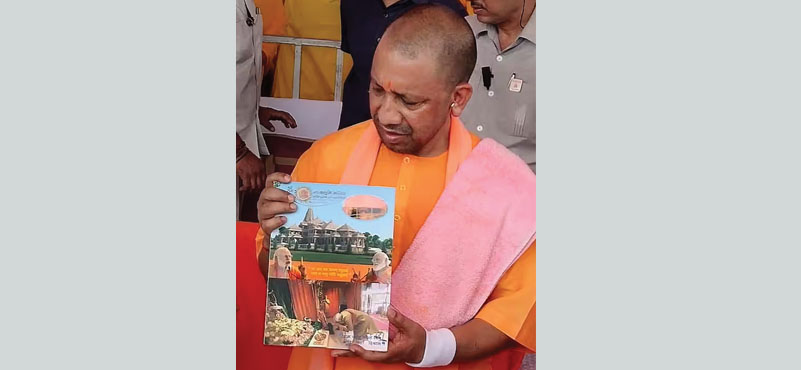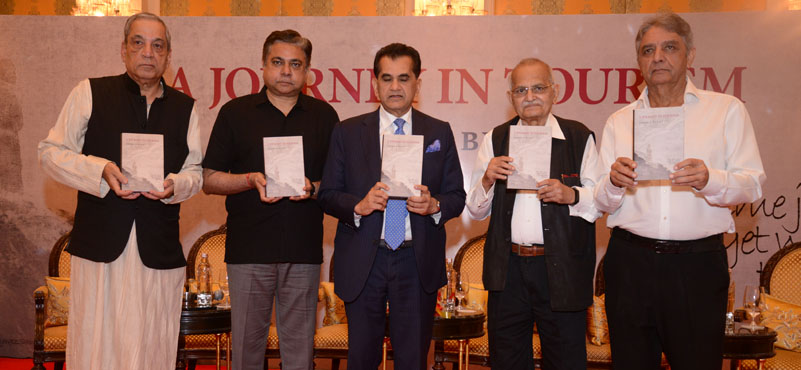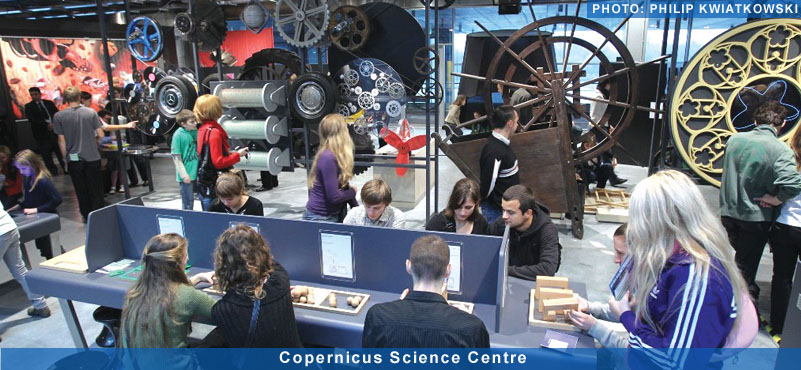A Disneyland-type theme park named ‘Ramaland’, A grand temple, an international airport and a slew of projects by the central and state governments are lifting Ayodhya to an entirely new pantheon of cities, The ‘double-engine sarkar’ is in the fifth gear to propel the ancient city into an exclusive list of holiest cities with truly world-class infrastructure and facilities. Read on to discover more!
The Vatican, Jerusalem, Mecca and Madina are some of the holiest cities in the world and attract hundreds of millions if not billions of faithful every year. The ancient city of Ayodhya, despite being the oldest religious site in the world, has never been able to attain such levels of footfalls and infrastructural development due to continued neglect by successive governments and long-drawn litigations. Now, the road is clear for the construction of the once-demolished temple at Ayodhya. With this, the city of Rama is poised to reclaim its stature on the world map as one of the holiest and grandest cities. The soon-to-be inaugurated grand Ram Mandir will be the fulcrum around which the government has envisaged the ‘Ayodhya Vision 2047.’
There is limited information in the public domain about the specifics of the ‘Ayodhya Vision 2047,’ but media reports indicate that the PM himself is keen on establishing Ayodhya as a world-class city, while keeping its spiritual, religious and historical flavours intact when the country celebrates its 100 years of independence. Ayodhya’s rejuvenation plan encompasses more than 250 projects to improve air, rail and road infrastructure, solid and liquid waste management, and the beautification of ghats and cultural sites, which would help transform the city into a global tourism destination.
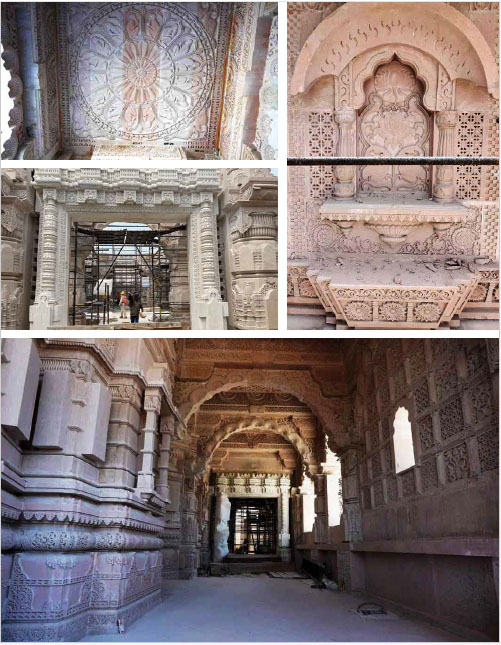
Uttar Pradesh Chief Minister Yogi Adityanath has recently apprised the PM about the vision document, which has been created by LEA Associates South Asia Private Limited, along with the Ayodhya Development Authority (ADA). The plan was conceptualized after extensive deliberations with local communities, including priests, seers and prominent citizenry. Calling the rejuvenation of Ayodhya one of his top priorities, the CM said, “The people of the country and the world are eager to see a ‘Divya, Bhavya, Navya Ayodhya’. We have to ensure that every devotee and tourist visiting Ayodhya goes back with a special sense of peace, contentment and joy.”
Here is a rundown of some of the key transformational projects that are either already underway or are expected to come up in the future.
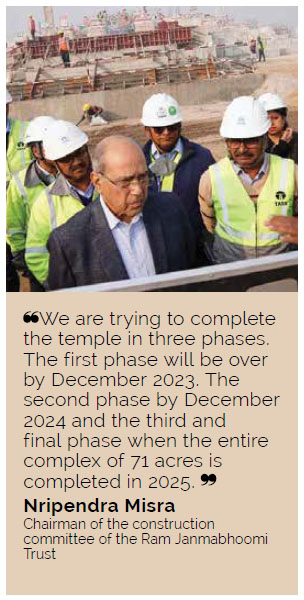 A Disneyland-type theme park called ‘Ramaland’
A Disneyland-type theme park called ‘Ramaland’
It is difficult to imagine a theme park on Ramayana – one that would rival the Disneylands of the world. That, too, is in the offing. Officially called the ‘Ayodhya Imaginative and Prescient 2047,’ the Ramaland, is an ultra-modern theme park and a part of the Ayodhya Rejuvenation Plan. The proposed theme park is speculated to be completed by the end of next year and will attract children and adults alike. “In the spiritual city of Ayodhya, we always wanted to come up with something that caters to people of all age groups. Theme parks were the most viable solution. The move is not only expected to be a major attraction among tourists but will also make Ayodhya a global tourism hotspot,” Mukesh Meshram, Uttar Pradesh’s Principal Secretary, said.
Media reports suggest that the ‘one-of-its-kind’ theme park will be equipped with several entertainment facilities and rides, and also a dedicated section for religious tourists.
The grand Shree Ram Mandir Project
Shri Ram Janmabhoomi Teerth Kshetra Trust, the body responsible for overseeing the construction of the temple, expects the Garbha Griha (the Sanctum Sanctorum) to be completed by September this year, three months prior to the target date of December 2023. Media reports suggest that 70 per cent of the construction is already completed. Chairman of the construction committee of the Ram Janmabhoomi Trust, Nripendra Misra shared crucial details about the temple in a recent interview in a leading English daily. He said, “We are trying to complete the temple in three phases. The first phase will be over by December 2023 when the ground floor will be complete, but not iconography. The second phase by December 2024 when the temple — first and second floors – will be completed. The third and final phase when the entire complex of 71 acres is completed in 2025. I am trying to make the seven temples (around Ram) in the first phase. Perkota (outer perimeter of the temple), pilgrimage facilitation centre, over 2000 toilets are to be completed by December 2023.”
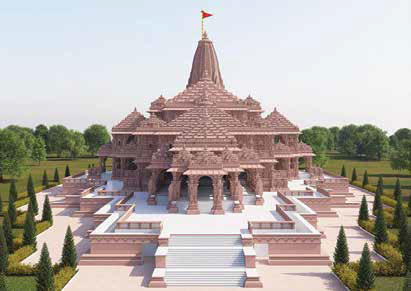 Sharing some insights into the temple’s unique features, Misra said that “the sanctum sanctorum is on the ground floor. This is where the Lord will be in standing pose, 51 inches, roughly 4-5 years in age, on a lotus, with something in a manner that attains the height of 8 feet. Why that is necessary to predict is because work is being done to bring the light being funnelled such that it falls on the Lord’s forehead on the Ram Navmi day. So, experts are (working out the parameters) factoring in the movement of the earth around the sun for 19 years. This will ensure that we can modulate, manually, so that on Ram Navmi day, the sunlight actually falls on the Lord’s forehead at 12 noon. This is being worked out by experts at Central Building Research Institute and the astronautical institute in Pune.”
Sharing some insights into the temple’s unique features, Misra said that “the sanctum sanctorum is on the ground floor. This is where the Lord will be in standing pose, 51 inches, roughly 4-5 years in age, on a lotus, with something in a manner that attains the height of 8 feet. Why that is necessary to predict is because work is being done to bring the light being funnelled such that it falls on the Lord’s forehead on the Ram Navmi day. So, experts are (working out the parameters) factoring in the movement of the earth around the sun for 19 years. This will ensure that we can modulate, manually, so that on Ram Navmi day, the sunlight actually falls on the Lord’s forehead at 12 noon. This is being worked out by experts at Central Building Research Institute and the astronautical institute in Pune.”
One of the trustees Dr Anil Mishra said that they were confident that the “sanctum sanctorum will be completed three months before the due date. That’s why we have advanced the deadline from December 2023 to September 2023.” He further shared that a majority of the work for the first phase of the temple was complete. “Only 167 pillars are left to be installed in the temple,” he added.
How these developments will impact regional growth
Eastern Uttar Pradesh, and the larger Purvanchal, is expected to benefit from these large-scale infrastructural developments. The construction of the Ram Mandir is expected to significantly boost religious tourism in Ayodhya. The world’s tallest statue of Lord Ram at INR 2,500 crore, a proposed luxury cruise and many other such developments are likely to propel Ayodhya into a league of its own. This will lead to an influx of tourists, creating a ripple effect, driving economic growth and generating new opportunities for various sectors. To accommodate the anticipated surge in tourism, the Ayodhya rejuvenation plan includes extensive infrastructure development. This includes boosting the transportation networks to ensure seamless connectivity.
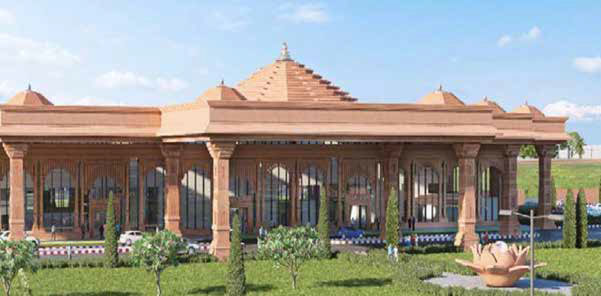 The hospitality industry, too, stands to gain immensely from the increased number of visitors to Ayodhya. Several leading hotel chains like the IHCL have already expressed interest in opening multiple hotels in the city in the coming years. Speaking to a leading newspaper, Puneet Chhatwal, MD & CEO of IHCL, said: “We have signed for two properties, one under Vivanta and the other under Ginger brands, these would take some 24-36 months to complete.” With a few others taking the lead, it is expected that others will follow suit and the city will witness the construction of new hotels, resorts, guesthouses, and other accommodation options to cater to the growing demand for lodging. Existing hotels and eateries are likely to expand and upgrade their facilities to provide enhanced services to tourists. This growth will create employment opportunities and drive economic activities in Ayodhya and its surrounding areas.
The hospitality industry, too, stands to gain immensely from the increased number of visitors to Ayodhya. Several leading hotel chains like the IHCL have already expressed interest in opening multiple hotels in the city in the coming years. Speaking to a leading newspaper, Puneet Chhatwal, MD & CEO of IHCL, said: “We have signed for two properties, one under Vivanta and the other under Ginger brands, these would take some 24-36 months to complete.” With a few others taking the lead, it is expected that others will follow suit and the city will witness the construction of new hotels, resorts, guesthouses, and other accommodation options to cater to the growing demand for lodging. Existing hotels and eateries are likely to expand and upgrade their facilities to provide enhanced services to tourists. This growth will create employment opportunities and drive economic activities in Ayodhya and its surrounding areas.
Ajay Bakaya, Director, Sarovar Hotels has said his group will be the first to have a branded hotel in the city, expected to open later this year. Branded accommodation is expected to instil greater confidence in the travelling public, especially from the well-heeled pilgrims.
An international brownfield airport
 The Airports Authority of India (AAI) has begun the construction of the Maryada Purushottam Shri Ram International Airport in Faizabad. The airstrip at Faizabad is being upgraded, and the airport will be spread across 821 acres. AAI has planned the extension of the runway, taxiway and domestic terminal building, among other upgrades. The domestic terminal building will be developed to cater to 300 passengers per hour. We understand that the international airport will be developed in a staggered manner and will be designed to accommodate large aircraft like Boeing 777s. The airport, too, will reflect the local cultural ethos, and the terminals will reportedly feature shikharas, pictorially displaying key events of the epic tale Ramayana. The domestic airport will start operations by the end of 2023.
The Airports Authority of India (AAI) has begun the construction of the Maryada Purushottam Shri Ram International Airport in Faizabad. The airstrip at Faizabad is being upgraded, and the airport will be spread across 821 acres. AAI has planned the extension of the runway, taxiway and domestic terminal building, among other upgrades. The domestic terminal building will be developed to cater to 300 passengers per hour. We understand that the international airport will be developed in a staggered manner and will be designed to accommodate large aircraft like Boeing 777s. The airport, too, will reflect the local cultural ethos, and the terminals will reportedly feature shikharas, pictorially displaying key events of the epic tale Ramayana. The domestic airport will start operations by the end of 2023.
 The surge in tourism will also benefit local businesses and artisans. The demand for religious and cultural artefacts, souvenirs, and handicrafts is expected to increase, creating a market for local artisans and craftsmen. Small-scale businesses such as restaurants, shops, and tour operators will witness a boost in their customer base, thereby contributing to the local economy.
The surge in tourism will also benefit local businesses and artisans. The demand for religious and cultural artefacts, souvenirs, and handicrafts is expected to increase, creating a market for local artisans and craftsmen. Small-scale businesses such as restaurants, shops, and tour operators will witness a boost in their customer base, thereby contributing to the local economy.
These developments are likely to have a direct bearing on the employment generation, across various sectors, including construction, tourism, hospitality, transportation, and retail. The need for skilled professionals in these industries will increase, leading to the development of skill training programs and employment opportunities for the local population. This will not only contribute to the economic growth of Ayodhya but also improve the standard of living for its residents.
ABOUT THE AUTHOR
Shashank Shekhar is a freelance journalist, a regular contributor to Destination India.

